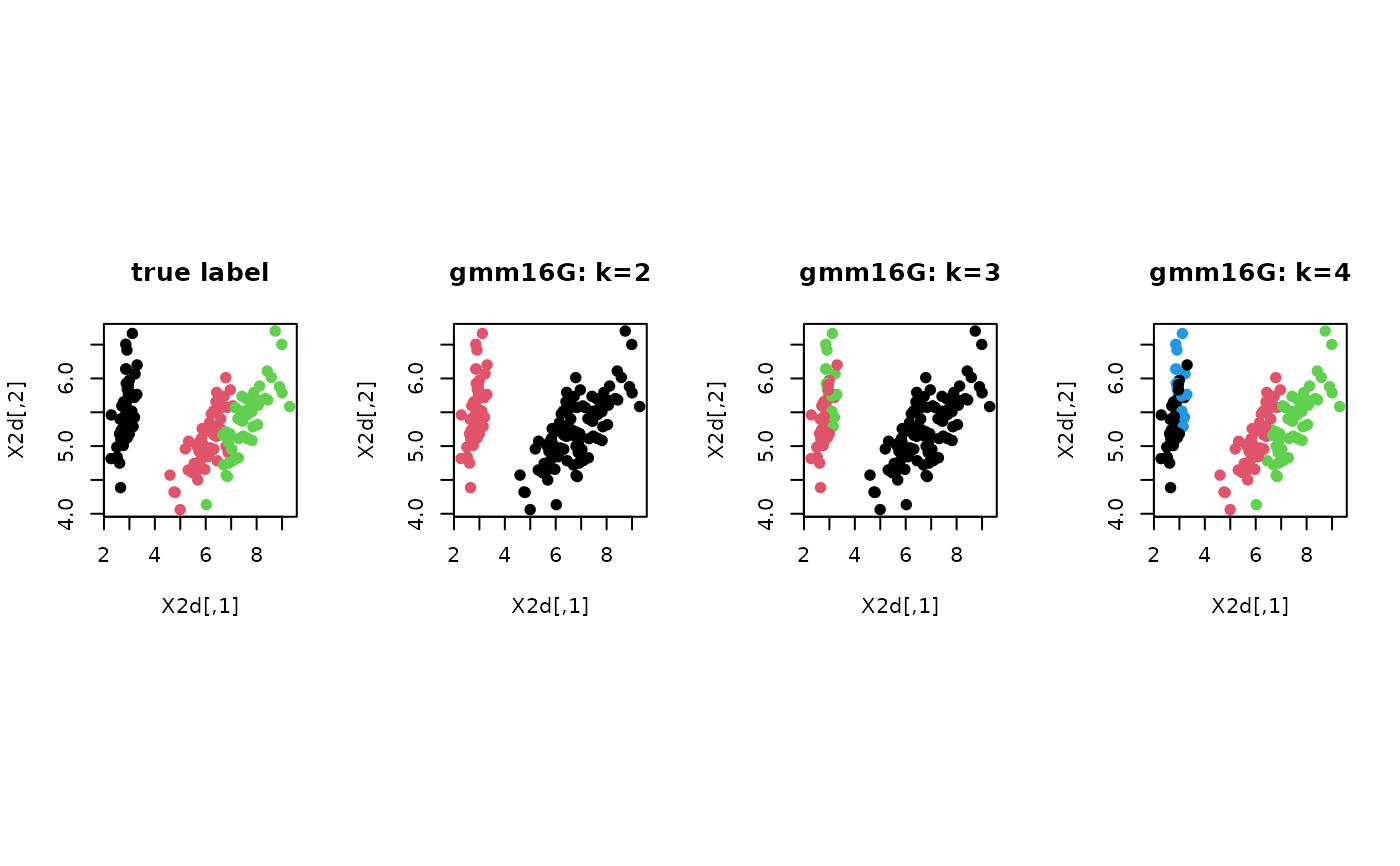When each observation \(x_i\) is associated with a weight \(w_i > 0\), modifying the GMM formulation is required. Gebru et al. (2016) proposed a method to use scaled covariance based on an observation that $$\mathcal{N}\left(x\vert \mu, \Sigma\right)^w \propto \mathcal{N}\left(x\vert \mu, \frac{\Sigma}{w}\right)$$ by considering the positive weight as a role of precision. Currently, we provide a method with fixed weight case only while the paper also considers a Bayesian formalism on the weight using Gamma distribution.
gmm16G(data, k = 2, weight = NULL, ...)
Arguments
| data | an \((n\times p)\) matrix of row-stacked observations. |
|---|---|
| k | the number of clusters (default: 2). |
| weight | a positive weight vector of length \(n\). If |
| ... | extra parameters including
|
Value
a named list of S3 class T4cluster containing
- cluster
a length-\(n\) vector of class labels (from \(1:k\)).
- mean
a \((k\times p)\) matrix where each row is a class mean.
- variance
a \((p\times p\times k)\) array where each slice is a class covariance.
- weight
a length-\(k\) vector of class weights that sum to 1.
- loglkd
log-likelihood of the data for the fitted model.
- algorithm
name of the algorithm.
References
Gebru ID, Alameda-Pineda X, Forbes F, Horaud R (2016). “EM Algorithms for Weighted-Data Clustering with Application to Audio-Visual Scene Analysis.” IEEE Transactions on Pattern Analysis and Machine Intelligence, 38(12), 2402--2415. ISSN 0162-8828, 2160-9292.
Examples
# ------------------------------------------------------------- # clustering with 'iris' dataset # ------------------------------------------------------------- ## PREPARE data(iris) X = as.matrix(iris[,1:4]) lab = as.integer(as.factor(iris[,5])) ## EMBEDDING WITH PCA X2d = Rdimtools::do.pca(X, ndim=2)$Y ## CLUSTERING WITH DIFFERENT K VALUES cl2 = gmm16G(X, k=2)$cluster cl3 = gmm16G(X, k=3)$cluster cl4 = gmm16G(X, k=4)$cluster ## VISUALIZATION opar <- par(no.readonly=TRUE) par(mfrow=c(1,4), pty="s") plot(X2d, col=lab, pch=19, main="true label") plot(X2d, col=cl2, pch=19, main="gmm16G: k=2") plot(X2d, col=cl3, pch=19, main="gmm16G: k=3") plot(X2d, col=cl4, pch=19, main="gmm16G: k=4")
